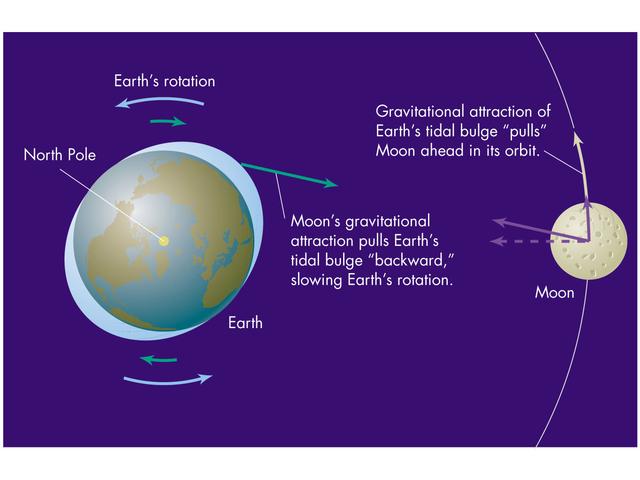When the Apollo astronauts set down on the moon, they didn’t just plant the flag and take a selfie–they had science to do.
One of the experiments left by Apollo was a laser range finding experiment. By means of high quality retro-reflectors left by Apollo and two Soviet Lunakod missions, we now know that the moon is receding by nearly 4 cm per year. We also know our day is slowing down. So what gives?
The moon’s gravity constantly creates a bulge in the Earth, mostly in our oceans. But our daily rotation constantly carries that bulge eastward. The moon must then constantly pull it back toward itself–and the bulge constantly pulls the moon forward in its orbit. This has the effect of slowing our rotation and accelerating the moon’s orbit.

When the moon formed, both it and Earth revolved much more quickly than today. The Earth probably had something like a six hour day, and the moon? We don’t know how long its day was, but it was much closer then, less than a tenth its current distance, and both the Earth and its moon were partly molten, which means the tides were vastly greater than today (today, 90% of the tidal bulge is in our oceans) –and therefore this process of recession and slowing operated much, much faster. The moon’s rotation slowed until its rotational and orbital period were in sync, and then its bulge faced Earth and it became locked.
Looking at the diagram, you might notice that there are actually two bulges, one on either side of the Earth. This is true, but since gravity weakens with distance, the bulge nearer the moon is substantially larger and interacts more strongly with the moon than the farther one. For purposes of understanding, we can treat the system is if there were only a single, smaller bulge on the moon’s side.
All moons that orbit in the same direction their planet spins undergo this same process. How long it takes them to become locked depends on the orbital distance and speed and the composition of the two bodies. Liquid bodies naturally have much large tidal bulges than solid ones, and so feel the change more strongly.
Don’t worry. Although the moon is now almost a foot farther away that it was when we first set foot on it, it’s not going anywhere. The recession is slow enough, the sun will die before the moon can get away.
